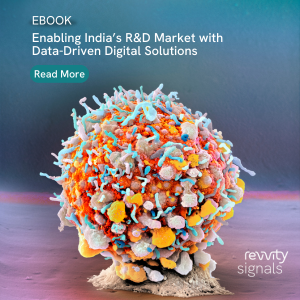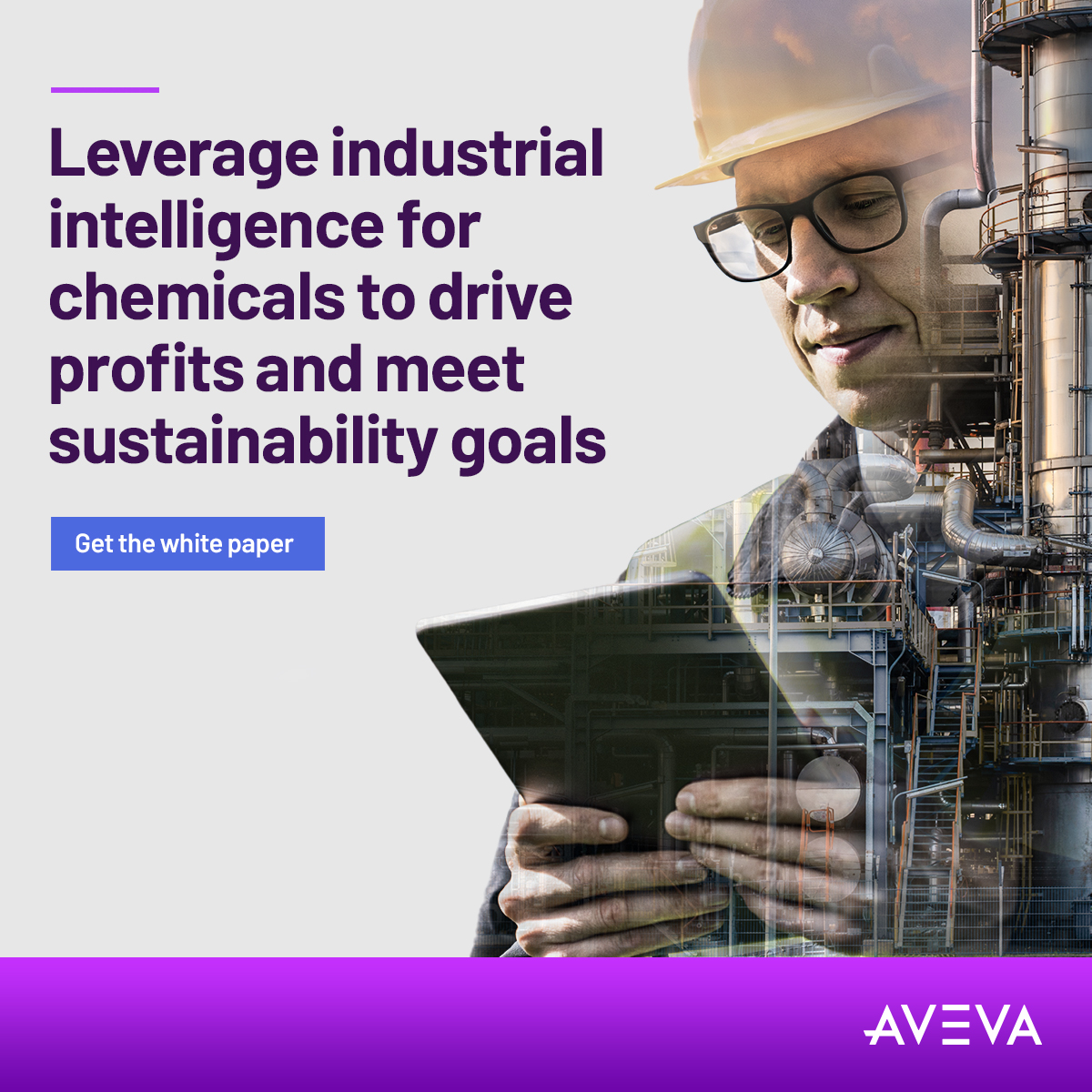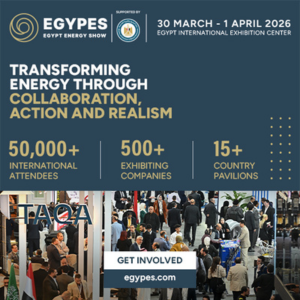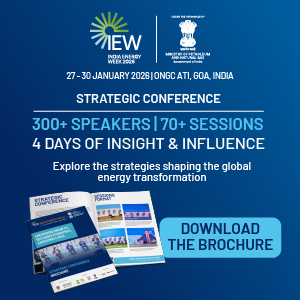Gallery
July 08, 2022
We have consistently expanded our business in India: Vinod Paremal, President & MD, Evonik, India Region
Evonik's six innovation growth fields are: Sustainable nutrition, healthcare solutions, advanced food ingredients, membranes, cosmetic solutions, and additive manufacturing
2022 global trends in specialty chemicals and its implications on India?
It would definitely be the ‘Sustainability Imperative’; more than a trend, it is a compelling need that has the entire industry pivot its axis across its research, production, and business operations. This is supported by adequate, and timely policy measures that complement industrial advancement across the value chain. Next would be the digitization of operations, from augmented human resource productivity to implementing AI to collect data on consumer behavioural patterns.
India is in a position of advantage as the market is geared up to boom over the next decade. The availability of a skilled talent pool will only add to this potential. The policy environment is also inclined to this growth, with acceleration programs that ease business and are fertile for infrastructural development. We’re looking forward to the environment becoming more attractive for investments, along with a robust Performance Linked Incentive (PLI) scheme such that the ecosystem receives the support it commands.
Evonik India has played a key role in shaping up various industries in its four decades of existence in India? Key milestones achieved by the company in FY 2021-22?
Evonik has been contributing to various industries by offering innovative products over the years. Being a specialty chemical company, while we often contribute only small amounts of material, those contributions are precisely what make the difference. With this endeavor we have consistently expanded our business in India. In 2021, Evonik India has been able to supply to the industry despite COVID challenges and global supply chain issues. We have ensured continuous supply to essential industries like pharma, animal feed, agrochemicals, and FMCG in these challenging times with our strong resilience. The company focuses on - nutrition & care, specialty additives, smart materials, and performance materials. The company focuses on - Nutrition & care, specialty additives, smart materials, and performance materials.
How has Evonik India performed in FY 2021-22? What are the plans for FY 2022-23?
In 2021, most of our businesses grew beyond pre-COVID levels. We see growth in the overall Indian economy and momentum in relevant end-markets like paints & coatings, infrastructure, automotive, animal feed, pharmaceuticals, etc. We also need to be cautious about developments in the global geo-political arena and the COVID situation around the world as that may affect supply chains for our businesses in India.
How are Evonik India's R&D centres at Mumbai and Dombivli and six Application Technology Labs contributing to India and the global market?
These are critical to our long-term strategy for our Indian and global markets. Our Research Center India (RCI) in Mumbai is our global competence center for oral formulation development, and its state-of-the-art facility is designed to cater to industries ranging from pharmaceuticals, nutraceuticals, and food technology. Our R&D centre for catalysts supports fine chemicals, bulk chemicals, and edible oil industries, in addition to the pharmaceutical and food with its expertise in catalyst development for complex chemistry. Our six Application Technology Labs form the backbone of our customer-centric approach, because they support our local and regional customers with new formulation development, trouble shooting, product testing, application trials, and distributor training for technical know-how. Our business functions are founded on our mastery on research and innovation, and our strong customer-first approach.
Evonik puts a lot of thrust on sustainability? Key sustainability plans for the company in FY 2022-23?
Evonik recently conducted a cross-functional sustainability analysis to assess and integrate sustainability topics into the company’s portfolio and strategic management decisions. As per the report, 90 percent of products have a positive sustainability benefit, and over 30 per cent of its portfolio delivers superior sustainability benefits. This directly addresses customers’ desire for sustainable products, and paved the way for our strategic targets for 2022 and beyond:
• 100 percent of all raw material suppliers where annual procurement voluzme is > €100 thousand to be covered by Together for Sustainability (TfS) assessments by year end 2025 (Status 2021-69%)
• Reduce greenhouse gas emissions - Absolute scope 1 and scope 2 emissions by 50% by 2025 (reference base 2008) (Status 2021-43%)
• Absolute scope 3 emissions from the upstream value chain – principally from the raw material backpack by 15% by 2025 (reference base 2020)
• Reduce both absolute and specific energy consumption by 5% by 2025 (reference base 2020)
• Occupational health performance index >= 5
• Substantial increase in sales generated by next generation solutions (Status 2021 - 37%)
• Generate more than Euro 1 billion sales in our six innovation growth fields by 2025 Evonik's six innovation growth fields are: Sustainable nutrition, healthcare solutions, advanced food ingredients, membranes, cosmetic solutions and additive manufacturing.
Can you share your CSR initiatives for India? CSR Plans for FY 2022-23?
We’re deeply committed to improving the social environment in any way possible, and consciously reach out to support causes across the board, primarily in the realm of children’s education, women empowerment, and healthcare. Recently, one of our projects even involved employees from the Asia Pacific contributing to a local NGO that utilized the aid to procure medical equipment for patients during the pandemic. Likewise, we have projects lined up by our partner trusts and foundations for the upcoming year, that will see us actively support infrastructure for schools, procurement of equipment and facilities for medical aid, and tools to help women and specially abled people live qualitatively better lives.
July 08, 2022
We have a robust manufacturing set-up for heat exchangers in India, Narendra Joshi, AGM - HEBU, HRS Process Systems
Interview with Narendra Joshi, AGM - HEBU, HRS Process Systems Limited
July 08, 2022
Our Indian innovation center is developing new valve designs based on customer challenges, says Sreedhar Sukumaran, COO, Anval International
Interview with Sreedhar Sukumaran, Chief Operating Officer, Anval International Pte Ltd
July 07, 2022
Our quality and safety led services are contributing to the growth of Indian industrial sector, says Deepak Sahay, MD-India Operations, Dekra
Our quality and safety led services are contributing to the growth of Indian industrial sector, says Deepak Sahay, Managing Director- India Operations, Dekra
July 06, 2022
We are expanding capacity for redispersible polymer powder to 800 tonnes per month, says Sandeep Agrawal, Managing Director, Sakshi Chem Sciences
We are expanding capacity for redispersible polymer powder to 800 tonnes per month, says Sandeep Agrawal, Managing Director, Sakshi Chem Sciences
July 05, 2022
Expanding to make 600,000 litres of Ethanol per day: Samir S. Somaiya, Chairman & Managing Director, Godavari Biorefineries Limited
It is estimated that over 62 million tons of biogas can be produced from various renewable sources. Through the SATAT programme, the government has set an aggressive target to produce 25 million tons of biogas by 2025 meeting 40% of India's gas requirement.
How will biofuel, bio-CNG, and bio-electricity impact India and its economy in the long run?
The current geopolitical turmoil has dramatically increased costs of food and fuel. In addition, the entire world faces climate change. India must address its energy security and finally being an agrarian nation with millions of small farmers, India needs to provide meaningful livelihoods to its population. This can be met with farmers growing crops for food and fuel.
Renewable energy can help address these three challenges. India has an abundance of sunlight. This sunlight can help us generate solar power, but also help the crops we grow be a source of energy. Renewable energy, as opposed to energy derived from fossil fuels, helps combat and mitigate climate change.
Sugarcane is one such crop. India makes more sugarcane than it needs for sugar. The government has recognized this sugarcane surplus as a source of energy. Energy from sugarcane comes to us in three forms - ethanol as a biofuel, bio-CNG, and bio-electricity. All three have tremendous potential to meet our energy needs for mobility as well as home needs.
The Government of India in June 2021 has articulated an aggressive and excellent roadmap for ethanol blending. That report is very comprehensive and very well articulates the steps that need to be taken to take this opportunity forward. In fact, the government has advanced the target date for 20% ethanol blending from 2030 to 2025. The government is also encouraging the conversion of grain to ethanol, knowing fully well, that the total ethanol demand will exceed 15 billion litres (across all applications in 2025). Of these 15 billion litres, 10 billion will be used as a fuel.
The future will still require higher ethanol blending and energy self-sufficiency. The government is already piloting E100 as a fuel, and is asking the automobile manufacturers to make flex fuel cars. India has many other sources of biomass that can be used to generate compressed biogas. It is estimated that over 62 million tons of biogas can be produced from various renewable sources. Through the SATAT programme, the government has set an aggressive target to produce 25 million tons of biogas by 2025 meeting 40% of India's gas requirement.
Every sugar mill makes surplus electricity as it generates steam to meet its process needs. This electricity is exported to the grid, and can be used to meet the growing power needs of the country, and be a source for mobility as cars move towards electric vehicles.
Every sugar mill generates electricity as a co-product by using efficient high pressure boilers and turbines. Each sugar mill can export about 30 kwh/ton crushed of electricity while crushing cane (excluding saved bagasse). 320 million tons of cane will mean 9.6 million mwh of electricity. An electric car can give a mileage of about 7 km/kwh. This equates to about 67 billion km of distance traveled.
Petrol gives on average 10 km/l. This translates to 6.7 billion litres of petrol saved (to put this number in context, India consumed 42 billion litres of petrol in 2019). The combination of these will go a long way in addressing India’s energy security, mitigate climate change and improve farmer incomes. Further, it will also make India stronger in the context of geopolitical, climate and energy shocks.
Will India reach 20% Ethanol blending by 2025 and introduce E20 fuel by 2023? How will this result in transformation of biorefineries and rural economy?
India will reach 20% blending by 2025. There are large investments happening to convert sugarcane syrup and/or B molasses to ethanol. Simultaneously, there are investments in setting up grain based ethanol facilities.
With these initiatives, the country is poised to achieve a 20% blend by 2025. With the manufacture of flex fuel cars, and the imperative of energy security especially in the face of global supply shocks, there is a greater consensus on implementing green and sustainable sources of energy and biomaterials.
This will provide an option to agribusinesses to make foods and fuels. This will lead to a stability of revenue streams and consequently farmer incomes. To give an example, earlier, sugarcane was used only to make sugar. Surplus production of cane weighed heavily on the sugar market, leading to surpluses, lower selling prices and sales, cane arrears, and then lower cane production - amplifying surpluses and deficits.
The Biofuel market provides a ‘sink’ for production and stability to the markets and to farmer incomes. This will lead to the set[1]ting up of industry in rural areas and will translate to rural prosperity.
What’s the present yearly capacity of Ethanol for Godavari Biorefineries? Are you further expanding your ethanol capacity?
Godavari has always been at the forefront of making ethanol from sugarcane. The company rapidly increased its ethanol capacity from 200,000 litres per day to its current ethanol capacity of 400,000 litres per day.
We are currently expanding to make 600,000 litres per day from the coming sugarcane crushing season. Next year, we further plan to add a bolt on capacity for adding grain as a feedstock giving us greater flexibility and resilience in our ethanol capacity.
The company is planning to jump into Ethanol based Specialty Chemicals for Pharma Intermediates and Agro Intermediates. Any development on this front?
The company is already in the business of ethanol based specialty chemicals. Chemicals comprised almost 35% of our business in the year ended March 2021. The company plans to continue to expand in the business of making specialty chemicals in a wide range of end use applications, including pharmaceutical intermediates, agrochemicals, coatings, and more.
What’s your approach to sustain[1]ability and plans for achieving net zero? Sustainability initiatives that will improve resource and product sustain[1]ability for the company?
The company fundamentally believes in using renewable resources to make fuels, energy, biochemicals, biomaterials and other products. Sugarcane and ethanol are used to make all the products listed above. The company believes in the concept of a cascading and circular biorefinery.
In addition, the company is also working with farmers to use drip irrigation, inter-crop[1]ping, remote sensing, soil testing, bio-fertilizers, and traditional agro-ecology practices like Panchagavya and Jeevamrut to reduce the carbon footprint, improve soil health, improve farm yields and incomes.
What is the latest development regarding your R&D facilities?
The company has three R&D facilities outside Mumbai and at each of its manufacturing locations. The company has R&D facilities from laboratory to pilot plant facilities. Godavari believes in co-creating end-use applications with collaborators and customers. Since these research programmes are developed internally, these facilities are needed to optimize reaction conditions, yields and scale up.
July 05, 2022
Our motto is to design right pump for right applications, says Chintan Turakhia, Partner, Pumpsquare Systems
Our motto is to design right pump for right applications, says Chintan Turakhia, Partner, Pumpsquare Systems
July 05, 2022
Innovation and quality compliance are key parameters for success of bellow industry, says Hari Srinivasan, MD, Fluidyne Engineers
Innovation and quality compliance are key parameters for success of bellow industry, says Hari Srinivasan, Managing Director, Fluidyne Engineers
July 04, 2022
Leveraging the growth opportunity offered by the Indian market: Unnathan Shekhar, MD, Galaxy Surfactants
Our current Capex – one at Jhagadia and the other at Tarapur is expected to become operational by the end of this financial year
How do you see the evolving trends in Personal and Home Care products?
Sustainability has become an important aspect of FMCG products amid a growing concern of climate change issues with consumers taking active steps in curbing their personal impact on the environment.
Consumers can be seen moving to ‘purpose-driven’ buying of home and personal care products that advocate sensitivity to global issues. We can see global FMCG players also make a move towards greener products.
Consumers prefer products that offer sustainability as well as product functionality that seamlessly fit into their ever-changing lives. We have seen a boost in the sale of mass and massive beauty & personal care products. Amidst the volatile economic situation due to the pandemic, consumers also indulged in affordable luxuries through premium beauty products and therefore, the premium beauty segment has also performed well in the past year.
With the rise in numerous D2C brands, e-commerce remained a preferred medium of purchase for the consumers in India as well as abroad.
The pandemic has given homecare considerable boost due to a comprehensive shift towards disinfection and the sense of security consumers get from having a clean-living environment for themselves and their families.
Post-Covid consumer sentiments have not changed drastically in home care. They are still looking for products that combat bacteria and microorganisms while also focusing on sustainability of homecare products by having natural ingredients. Products launched with anti-microbial claims have been steadily growing in APAC. In India specifically, there is a growing focus on hard surface cleaners and dishwashing products with anti-bacterial claims.
What is the growth mantra for Galaxy Surfactants in targeted segments – Performance Surfactants and Specialty Care products?
Galaxy Surfactants has been consistently delivering growth both in the Performance Surfactants as well as Specialty Care products.
Our strategy has been to drive growth in the mature markets with Specialty Care products. The emerging markets remain important for Performance Surfactants. In today’s fast changing environment, it is imperative that brands are quick in recognising and addressing consumer needs. Galaxy continuously strives to grow ahead of the market by anticipating consumer trends, focusing on path-breaking innovations, delivering value and offering customised solutions through its ‘Consumer to Chemistry’ approach.
Today’s consumers are globally shifting towards sustainable products; aligning infra[1]structural needs with sustainability, innovation, application, regulatory, technology support and business development has always been our mantra.
Sustainable and innovative solutions are not just restricted to Specialty Care products but also relevant to Performance Surfactants.
One such example is the low Dioxane variant of FAES, ‘GalEcoSafe’, developed by Galaxy Surfactants Limited. GalEcoSafe is specially designed Fatty Alcohol Ether Sulphates with ultra-low 1,4-Dioxane levels that not only make end products compliant with the new US regulations but also make them safer for consumption.
Galaxy has a technologically advanced and well-equipped Innovation Centre for new products and application development. How is the company planning to leverage this facility?
The consumer is becoming increasingly aware of what they need and have clearer expectations of the brands they use. The change in consumer demands are quite rapid given the overall increase in the pace of information exchange due to the internet. Galaxy partners with various customers to provide tailor-made solutions for its consumers. We ‘Customise with Care’ for our customers and accordingly deliver innovations that power brands.
The amino acid-based surfactants or mild surfactants such as Sodium Cocoyl Glutamate and Sodium Cocoyl Glycinate are derived from basic amino acids and palm oil[1]based fatty acids are sought after ingredients for today’s personal care formulations.
These surfactants are safe for the people and the planet and have been on the market for a while. Galaxy’s award-winning green technology platform enables us to offer a range of amino acid surfactants which are manufactured using a green catalyst making not only the product green but also the process green.
We have also developed easy-to-use sulphate-free surfactant and sunscreen blends that provide great formulation ease and the required functionality for the customers who want to leverage on our four decades of expertise in making effective ingredients.
What are the new products that you are working on to diversify your innovation funnel?
Today’s mantra is extensive collaboration with customers for end-product development.
Non-toxic Preservatives - Galguard LipoG is ‘non-toxic’, biodegradable, nature-derived and safe ingredient for consumers and the planet. It is a multi-functional ingredient that can be used for rinse-off, leave-on and wet-wipes application. Its solid nature and flexibility with the particle's size makes it suitable for water-less or concentrated formulations.
With Galguard Tetra, our preservative technology uses Lipidated Glycines, Caprylol Glycine and Undecylenoyl Glycine which are multifunctional cosmetic ingredients made by our unique patented green process.
Mild surfactants - In the field of green chemistry, Galaxy has done significant work on mild amino acid surfactant technology. With an aim to provide natural, green and sustainable cleansing solutions and as a responsibility towards the environment, Galaxy has come up with a unique mild and green amino acid-based surfactant system ‘Galsoft GLI 21.’ The product is a modern, ultra-mild sulfate-free cleanser. It is a combination of one of the mildest amino acid surfactants and is based on Galaxy’s Green Amino Acid technology.
Galsoft SLL, a condensation product of lactic acid and lauric acid, is a mild and multifunctional molecule. It provides an excellent foam profile, improved emollience, moisturisation and sensorial properties in both rinse-off and leave-on formulations while being readily biodegradable. The ingredient can be used in skin care, hair care and baby care products. Galsoft SLL can also be used to enhance the delivery of ingredients into personal care products such as creams, lotions, baby products, body cleansers, hair cleansers etc.
GalEcoSafe - GalEcoSafe range of surfactants are specially designed Fatty Alcohol Ether Sulphates with ultra-low 1,4-Dioxane levels. The low dioxane levels help to formulate Personal and Homecare products to comply with stringent and upcoming NY S4389B regulations. GalEcoSafe has 1,4-Dioxane content at 5 ppm max, making formulations safe while keeping them functional.
Galaxy Hearth - We have recently launched specialised homecare brand Galaxy Hearth focused particularly for the new normal world demands of consumers. Galaxy Hearth is also based on the fundamental premise of pioneering high sustainability enabling considerations of FMCG brands catering to homecare solutions.
The Hearth range comprises surfactants, wetting agents, viscosity builders, emulsifiers, preservatives, foam enhancers, pearlisers and many more such solutions.
Combined with four decades of formulation expertise posed by Galaxy Surfactants, these ingredients are a perfect solution for all homecare manufacturing needs.
These products are the result of extensive collaboration with customers for end-product development.
How is Galaxy striking a balance between environment-friendly policies and sustainable growth? When is the company planning to achieve net-zero?
With Sustainability - a way of life, Galaxy has embarked on a journey of sustainable growth across all geographies of the operations. Galaxy is committed to integrating sustainability into its business and continues to improve sustainable performance and practices by adopting globally applicable management systems. Galaxy strives to minimize environmental impact by setting long term sustainability goals.
To enhance integrated thinking, decision making and actions that support long term value creation for Galaxy and all its stakeholders, we are focusing on better inclusion of ESG issues into our strategy and operational management through the process of materiality.
We have initiated interaction with suppliers for mutual value creation on sustainability aspects. We have engaged continuously with our supply chain partners to improve operational efficiency and integrate sustainability considerations into our value chain.
Galaxy’s environmental performance are: Committed to the Science-Based Targets initiative (SBTi) for setting a highly ambitious target to transition to a low carbon economy; All Indian manufacturing units are zero liquid discharge; Gold Rating 2022, awarded by EcoVadis for Galaxy Group; Responsible Care logo for a period from February 2021 to January 2024; Assessment of risks and opportunities related to climate change using TCFD Recommendations; ESG Summit & Awards 2021 under the category of ‘Best ESG Initiative to improve to access to clean water’; CDP Score – Supplier Engagement (A), Climate Change (B), Water (B-), and Forest (C); and Galaxy Surfactants Limited is now 1.4x water positive.
Galaxy’s environmental targets are: Natural gas as main source of fuel; Renewable energy – 40 per cent as a source of electricity in India by 2026; Science based target at group level –committed to comply with the Paris Agreement; Net Water Positive and ZLD at Galaxy Chemicals, Egypt by 2023; 100 per cent waste circularity by 2030; and strong commitment towards product stewardship and life cycle assessment.
Working towards strong ESG (Environment, Social & Governance) parameters has been in the DNA of Galaxy. We firmly believe that sustainable growth, in the long run, can be achieved by striking the right balance between both qualitative and quantitative aspects of the business. Galaxy’s robust performance and strong presence worldwide is testimony of the fact that sustainability does not have to come at the cost of profitability. At Galaxy Surfactants growth is considered effective when it is inclusive.
What factors will drive current and long-term demand, especially in view of supply chain constraints amid continuing Covid-19 pandemic globally? What are your expectations for FY 2022-23?
Galaxy is strategically placed to cater to the home and personal care space. Given the current consumption patterns, demand has been steady. During the worst Covid waves also, the demand for essentials such as toothpaste, soaps, detergents remained stable. Over the past year challenges faced are majorly due to supply-led turmoil in terms of inbound and outbound logistics, steep freight rates, rising energy costs due to Russia - Ukraine conflict. The political instability in the European region is expected to at least continue till H1 of FY 2022-23. We therefore expect demand to remain higher than supply in the coming quarters.
What's the Capex plan for FY 2022-23 and projects and products where you are investing?
Galaxy has always been investing for the future. Our current Capex – one at Jhagadia, Gujarat, and the other at Tarapur, Maharashtra, are expected to become operational by the end of this financial year. These Capex are made for expanding capacities in our Specialty Care product range.
How is Galaxy Surfactants, India’s largest manufacturer of Oleochemical based surfactants and Speciality Care products for Home and Personal Care industries (HPC), poised for increase in its market share with the emergence of biotechnology-based raw materials and surfactants?
Surfactants that are sustainably sourced, have a low environmental impact, are mild, natural and have low impurities, will dominate the future. These are the attributes of green and bio-surfactants and we have already established our position in green surfactants i.e., mild surfactants category. At Galaxy, bio-surfactants are at a development stage and we are progressing well on the same.
How is Galaxy Surfactants positioned in the domestic and international market vis-a-vis competition?
Galaxy’s unique basket of offerings exclusively caters to the home and personal care space. This product range is effectively leveraged to address the requirements of customers in a comprehensive manner, especially in the Indian market.
Galaxy is an established player in surfactants and specialty care with global presence through its infrastructural capacities in India, Egypt, and the US.
Galaxy’s sourcing capabilities, value chain and customer centricity enables it to create its unique position in the international market. Hence, we believe that we are well positioned to leverage the growth opportunity offered by the Indian market and meet the growing global demand of our leading customers.
Note: This interview has also been published on Chemical Industry Outlook 2022 and here's the link to view full version of the annual compendium.
Click here to attend largest industry gathering at NextGen Chemicals & Petrochemicals Summit 2022
July 04, 2022
We are tying-up with new suppliers to help them reach capacity utilization via exports, says Manish Shah, MD, Prakash Chemicals
Interview with Manish Shah, Managing Director, Prakash Chemicals International Pvt Ltd
















